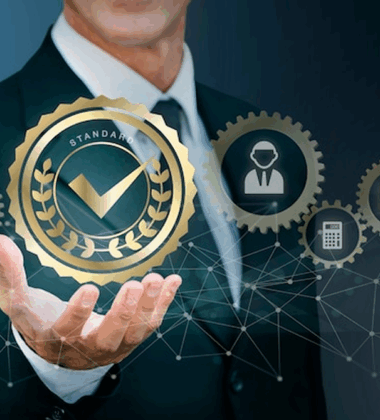The days of one-way supply chains are over—especially when it comes to trade shows and expos. For food and beverage brands showcasing products at global events like the Food and Beverage Expo USA, managing what happens after the booth closes is just as critical as preparing for opening day.
One area that often gets overlooked is the reverse logistics process: the systems and strategies brands use to manage product returns, unsold inventory, and promotional materials after the event ends. Done right, reverse logistics minimizes waste, cuts costs, and reinforces your brand’s commitment to sustainability. Done poorly, it can result in damaged goods, bloated warehousing fees, and environmental harm.
This guide outlines how F&B exhibitors can build a smart, sustainable reverse logistics process that benefits both the bottom line and the planet.
What Is Reverse Logistics in the Trade Show Context?
Reverse logistics refers to all operations related to the return, reuse, recycling, or disposal of products and materials once they’ve completed their forward journey—whether they’ve been sampled, displayed, or distributed during an event.
In the context of an expo, this might include:
- Leftover product inventory
- Unsold merchandise
- Reusable display materials or shelving
- Branded packaging
- Promotional swag
- Sampling waste and containers
- Returns from buyers or retailers post-show
At its core, the reverse logistics process helps companies recover value from outbound goods and materials, while avoiding unnecessary environmental impact or operational inefficiency.
Why Reverse Logistics Matters at Expos Like Food and Beverage Expo USA
Trade shows are often fast-paced, with exhibitors bringing large volumes of SKUs, samples, and branded materials to impress buyers and gain exposure. But what happens after three intense days of showcasing?
Without a solid reverse logistics plan, brands face several risks:
- Financial waste from discarded or lost inventory
- Higher shipping and storage costs for unmanaged returns
- Brand reputation damage from visible waste or poor handling
- Environmental consequences from landfilling usable goods
- Compliance violations in certain international jurisdictions
As sustainability standards rise—especially in the F&B industry—how you manage reverse logistics can directly impact buyer relationships and future vendor eligibility.
Step 1: Audit Inventory and Packaging Before You Ship
A proactive reverse logistics process starts well before the expo begins.
- Identify which items are one-time use vs. reusable.
- Pre-label inventory with barcodes or QR codes for easier tracking.
- Forecast realistically: how much product will you need to sample, sell, or give away?
- Pre-arrange fulfillment instructions for anything not distributed.
This audit allows you to set return policies, create shipping workflows, and reduce the likelihood of surplus or untracked waste.
Pro tip: Use this audit to flag products that may require special handling—such as temperature-sensitive goods, perishables, or items with cross-border compliance considerations.
Step 2: Choose the Right Partners for Post-Show Returns
Whether you’re working with a 3PL, local fulfillment vendor, or in-house logistics team, it’s critical to clarify responsibilities before the show ends.
Questions to ask:
- Who will receive returned inventory?
- Where will excess stock be sent—back to the warehouse, to local donation centers, or to a recycling partner?
- Will promotional items and branded materials be reused or retired?
- What are the cutoff times for post-event pickups?
For international exhibitors, local laws around returns, customs, and product destruction must be factored into the reverse logistics process. A poor customs strategy can lead to delays, fines, or seized goods.
Step 3: Create On-Site Return Stations for Easy Execution
If your team plans to reclaim materials from multiple parts of the show floor (sampling tables, shared brand activations, etc.), make it easy to collect everything in one place.
Set up an on-site return station at your booth or designated backroom area where:
- Team members can return unused items at end-of-day
- Materials are scanned, categorized, and logged
- Items are repackaged for reuse, recycling, or transport
A reverse logistics checklist or mobile app can help ensure nothing gets lost in the shuffle.
Step 4: Prioritize Sustainable Disposal and Redistribution
Trade show waste is one of the industry’s most pressing sustainability challenges. But your reverse logistics process can contribute to a greener outcome.
Options to consider:
- Donate perishable items to local food banks (check food safety guidelines)
- Compost biodegradable materials through expo partnerships
- Recycle branded booth materials via pre-selected vendors
- Send high-quality leftovers to secondary sales channels or DTC promo campaigns
The goal is to minimize landfill output and maximize the lifecycle of every asset brought to the expo.
Step 5: Track Everything—and Use That Data to Improve
Reverse logistics isn’t just about cleanup. It’s also a rich source of operational intelligence. Tracking what came back—and why—can reveal:
- Overproduction patterns (did you bring too much of one SKU?)
- Underperforming materials (which merch items weren’t picked up?)
- Shipping inefficiencies (did materials arrive too late or get damaged?)
- Customer interest trends (what did attendees gravitate toward?)
Use barcoding, inventory software, or mobile tracking apps to document what returns where. Post-show, conduct a debrief with your logistics team to review what worked and what should change next time.
Reverse Logistics KPIs to Monitor
To build a reverse logistics process that improves over time, start tracking these key metrics:
| KPI | Why It Matters |
| Percentage of returned inventory | Identifies overstocking or underdistribution |
| Return rate by SKU | Highlights which products resonate least |
| Waste-to-reuse ratio | Measures environmental impact |
| Time to process returns | Impacts labor and storage costs |
| Post-show donation volume | Enhances social impact reporting |
| Return logistics cost per unit | Influences future expo budgets |
Tracking these KPIs provides actionable insights not only for sustainability teams, but also for marketing, finance, and operations stakeholders.
Real-World Use Case: A Sustainable Beverage Brand at Food and Beverage Expo USA
A plant-based beverage brand exhibiting at the Food and Beverage Expo USA implemented a reverse logistics strategy that:
- Pre-labeled every pallet with return barcodes
- Used reusable crates instead of single-use boxes
- Contracted with a local food bank to donate unopened product at show’s end
- Rerouted unused signage and swag to their next expo in Canada
- Used dynamic QR codes to collect post-show customer feedback
The results:
- 78% of show materials were reused or repurposed
- $3,200 saved in shipping and disposal fees
- Featured in the expo’s official sustainability report
Their success proves that reverse logistics can be a strategic advantage—not just an afterthought.
Final Thoughts: Make Reverse Logistics Part of Your Expo Strategy
As the events industry becomes more sustainability-driven, the reverse logistics process is no longer a side task—it’s a core part of your expo execution plan. It influences your operational efficiency, environmental footprint, and even brand perception.
At large-scale expos like the Food and Beverage Expo USA, brands are expected to show not just what they sell, but how responsibly they operate. Integrating thoughtful, data-driven reverse logistics signals to buyers, partners, and attendees that your company is future-ready.
Need a reverse logistics playbook tailored to your next event? Let us help you create a system that turns returns and leftovers into lasting value.





